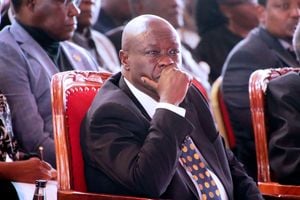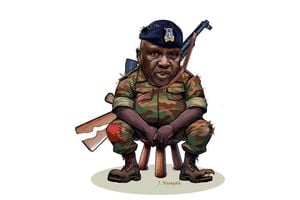Going back to the Cradle of Mankind

What you need to know:
- Rupi Mangat spends some time in the place where fossil finders discovered the 1.5 million-year-old remains of the Turkana boy.
The drive in the desert is hot. In the waterless rivers, women and children dig the sand to reach the aquifer.
It’s ironic to see the endless blue expanse of water merging with the sky, for Turkana is the world’s largest permanent lake in a desert – but its water is alkaline and no good for drinking. Clusters of doum palms create oases near the springs and homesteads made from doum bark and reeds stand far and apart.
Millions of years ago, our ancestors roamed what was then a thriving forest filled with gushing rivers. One of them was Nariokotome, which lends its name to the settlement and to its most famous resident called the ‘Turkana Boy’ or the Nariokotome Boy (or KNM-WT 15000) who was about 15 years old (though recent research puts his age at eight) when he died 1.5 million years ago.
You can see the cast at the Nairobi museum.
The river sand glistens under the hot blazing sun as we walk around the sieved pits where the most complete early human skeleton,108 bones of the Homo erectus boy, was discovered by Kenya’s famous fossil finder Kamoya Kimeu in 1984. He was part of Dr Richard Leakey’s team.
It’s a very simple term ‘found’ for digging for fossils is hard, time consuming and delicate work sifting through sand and debris – and almost always in extreme temperatures. Atop the hillock stands a Turkana homestead overlooking the dry Nariokotome river.
Surreal vistas
Everyone is out with the livestock or gone to fetch water save for two young women – Asuguru Ewoton and Lochara – with their babies.
They know a little about the important finds. It’s a desolate site but stunningly beautiful. We follow the lone desert road to Lodwar for our bus to Nairobi. White glistening sand dunes line the lake. Gilbert catches site of a path and we rush out of the car to walk to the lake. It’s hot and soon we’re soaking with sweat.
The lake doesn’t seem that close now as we reach the sand dunes and climb atop from where the most surreal vistas open – undulating white dunes of sand, swaying doum palms, blue water and the peak of the North island with fishermen and their colourful boats at the lake’s edge.
A Turkana woman and her little daughter join us, striding barefoot on hot sand. They are going to the lake to fetch water. We stop by the doum palm trees where the mother peels the palm fruit with her bracelet, which doubles as a knife, and we suck on the bitter-sweet peels.
At the lake, I follow her into the water and savour the swim. Camels rest under the shade of the thorn trees. We stop for a cold drink at Kalokol, a one-street hub on the shores of the lake.
Historic sites
The Turkana call the lake Anam Ka’alakol, meaning the sea of many fish. Kalokol derives its name from this and is an important fishing town from where trucks ferry fish to the interior.
Past Kalokol we stop at the rock gongs, which have many a legend surrounding them. One of them is that God was upset with the people and turned them into stones.
The volcanic Loima hills of Lodwar appear and we cross the bridge over the Turkwel River. The sign posts point to Lake Turkana National Park (now listed as a Unesco World Heritage Site), Sibiloi National Park, Koobi Fora, Central Island National Park and South Island National Park.
In the early afternoon, we stop at the Somali restaurant and drive past where Mzee Jomo Kenyatta spent time under house arrest in 1959 before being moved to Maralal. We freshen up at the Lodwar parish before hopping into the bus for the long ride back to the city.




